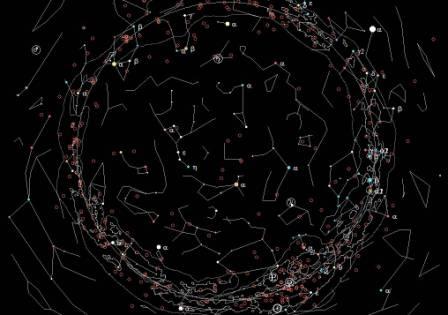
Figure 1 - Deep Sky Objects (open clusters and planetary nebula) in the Milky Way - 2D plot
http://members.csolutions.net/fisherka/astronote/Structure/GP1.jpg
During the coming 2006 Messier Marathon observing frame, later this month, we will see a number of the brighter galaxies in the "Realm of the Galaxies" constellations - Leo, CVn and Coma B. These galaxies are not randomnly oriented, but are organized around the supergalactic plane.
From the observing perspective of DSO hunters, the supergalactic plane has meaning in terms of understanding the location of major groups of bright galaxies and their positional relationships.
For example, in Milky Way galactic plane, where we are embedded inside the structure of the Milky Way, galactic DSOs (open clusters and planetary nebulae) are not randomnly distributed. They are grouped around the structure of the Milky Way plane. The following figure is a plot made with Cartes de Ciel and shows a consolidated, non-duplicative catalogue of approximately 340 Milky Way DSOs in Clark's, Messier's and Caldwell's lists, as seen from the North Galactic Pole -

Figure 1 - Deep Sky Objects (open clusters and planetary nebula) in the Milky Way - 2D plot
http://members.csolutions.net/fisherka/astronote/Structure/GP1.jpg
In this diagram, the circle is the galactic plane projected onto the celestial sphere. The FOV is about 270 degrees. The organization of the galactic DSOs around the Milky Way plane is apparent.
Extragalactic bright galaxy DSOs are similarly organized around the "flattened pancake" supergalactic structure of de Vaucouleurs (1975). The following figure is a plot made with Cartes de Ciel and shows a consolidated, non-duplicative catalogue of approximately 500 galaxy objects in Clark's, Messier's, Caldwell's and Arp's Peculiar Galaxy lists, as seen from the North Galactic Pole -
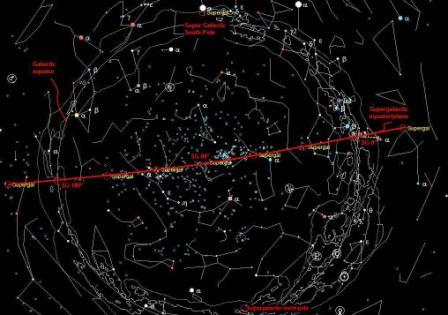
Figure 2 - Galaxies outside the Milky Way galaxy with the supergalactic plane line - 2D plot
http://members.csolutions.net/fisherka/astronote/Structure/SGP1.jpg
In this figure, the white circle is the galactic plane. I have drawn in the supergalactic plane, using equatorial coordinates converted from the supergalactic by the Nasa/Ipac Extragalactic Database Coordinate Conversion Calculator << http://nedwww.ipac.caltech.edu/forms/calculator.html >>.
In the figure Figure 2 (SGP1.jpg), you are looking at the edge of the supergalactic plane straight-on. As you can see, the supergalactic plane is rotated about 90 degrees away from the galactic plane. Most of the extragalactic DSOs plot like a scattergram, distributed on either side of the supergalactic plane line. The spring "Realm of the Galaxies" constellations - Leo, CVn and Coma B - can be seen near the center of the figure and the supergalactic plane. Some major galaxy superclusters are apparent, e.g. - the Virgo, the Coma, the Hercules, and the Leo superclusters.
A similar grouping of extragalactic DSOs - the Perseus-Pisces and Pisces-Cetus Superclusters - can be seen in another galactic plane view - this time looking at the celestial sphere from the viewpoint of the south galactic pole in the constellation Sculptor -
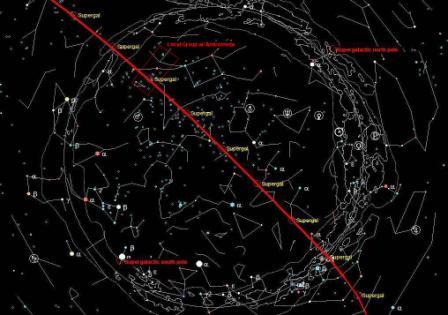
Figure 3 - Galaxies - 2D plot as seen from the South Milky Way Galactic Pole with the supergalactic plane line marker
http://members.csolutions.net/fisherka/astronote/Structure/SGP2.jpg
That the Milky Way is embedded inside the "flattened pancake" of the local Virgo supercluster, supergalactic structure, like the galactic DSO figure shown above, is more apparent when the celestial sphere is viewed from the supergalactic north pole, as shown in the following figure -
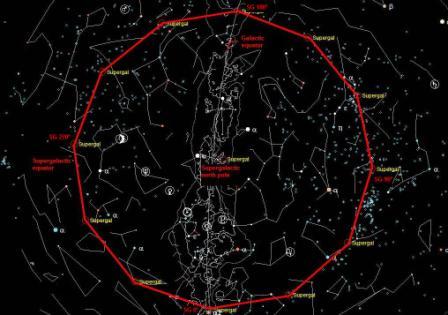
Figure 4 - Galaxies - 2D plot as seen from the North Supergalactic Pole with a Milky Way Galactic Plane Marker
http://members.csolutions.net/fisherka/astronote/Structure/SGP3.jpg
In this figure, the supergalactic plane is seen projected onto the celestial sphere "face-on," as opposed to "edge-on" in a prior figure. The white vertical line is the Milky Way galactic plane.
It is apparent that the bright DSO galaxies are grouped in some kind of structure organized along the supergalactic plane - just as Milky Way intra-galactic DSOs were groups around the Milky Way's galactic plane.
By comparing Figure 4 (SGP3.jpg) with the more detailed plots at Powell's Atlas of the Universe site - some of the supercluster regions shown in Powell's 3-D images can be associated with the equatorial celestial sphere projections shown in the above figure.
http://www.anzwers.org/free/universe/superc.html - containing -
http://www.anzwers.org/free/universe/leda.gif
Prof. R.B. Tully, in his classic book - the Nearby Galaxies Atlas - color codes these DSO galaxies by their galaxy cluster and supercluster associations. If you have the time to look at this Atlas at your local university library, it is worth the trip to get some grasp of how the major spring galaxy DSOs are related in 3-D.
The next figure, part of the spring equatorial celestial sphere covering the "Realm of the Galaxies" seen at an observing point at 41 deg N latitude, is shown with the supergalactic plane drawn in -

Figure 5 - Galaxies - 2D plot of the spring sky - horizon view with equatorial coordinate grid with supergalactic plane marker
http://members.csolutions.net/fisherka/astronote/Structure/MNight1.jpg
The same occurs near the autumnal equinox.
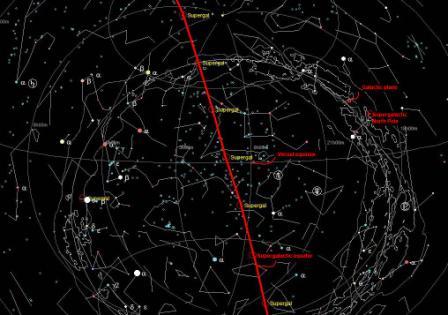
Figure 6 - Galaxies - 2D plot of the autumn sky - horizon view with equatorial coordinate grid with supergalactic plane marker
http://members.csolutions.net/fisherka/astronote/Structure/AE1.jpg
This is the portion of the equatorial celestial sphere seen about the time of the Messier Marathon from 41N.
Tully, R.B. 1987: Nearby Galaxies Atlas. Cambridge Univ. Press.
http://adsabs.harvard.edu/cgi-bin/nph-bib_query?bibcode=1987nga..book.....T
Marriott Library Call No. ML: Oversize Books/Journals,LvL 2 QB857 .T85 1987
(As of this posting the Marriott library copy is checked in.)
de Vaucouleurs, G. 1975. Supergalactic studies. III - The supergalactic distribution of nearby groups of galaxies. IV - Systematic orientation of galaxy clouds relative to the supergalactic plane. 1975ApJ...202..610D
http://adsabs.harvard.edu/cgi-bin/nph-bib_query?bibcode=1975ApJ...202..610D